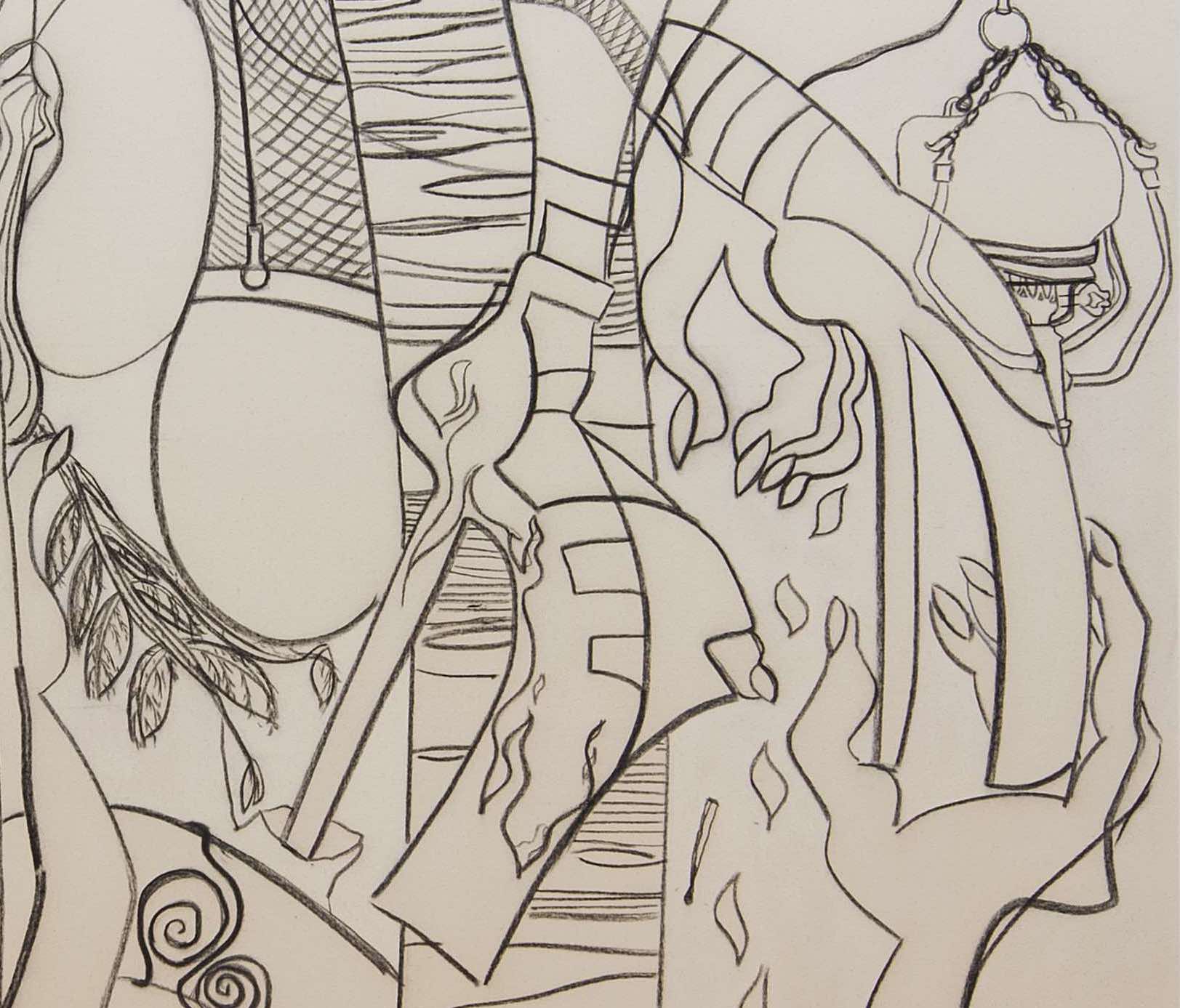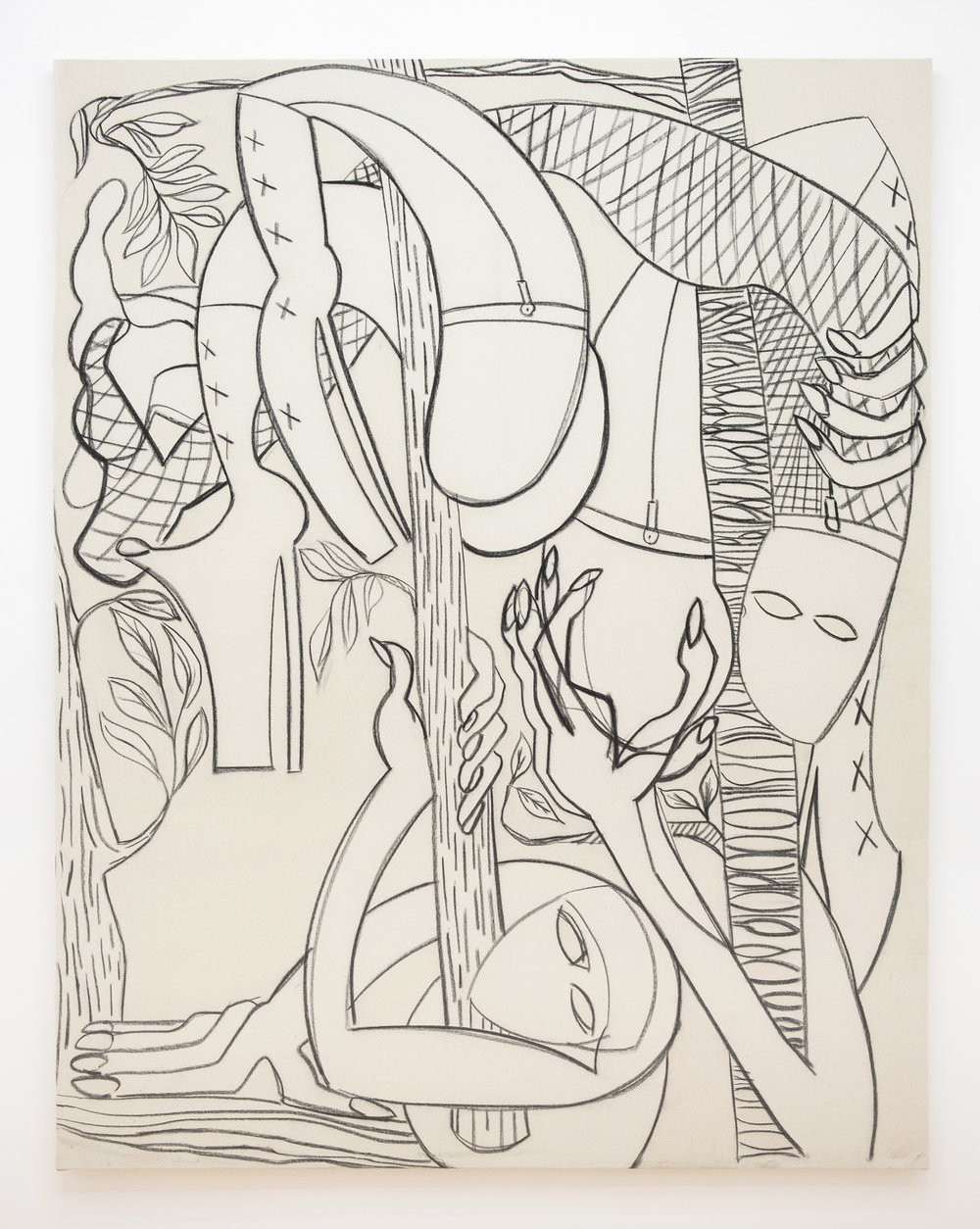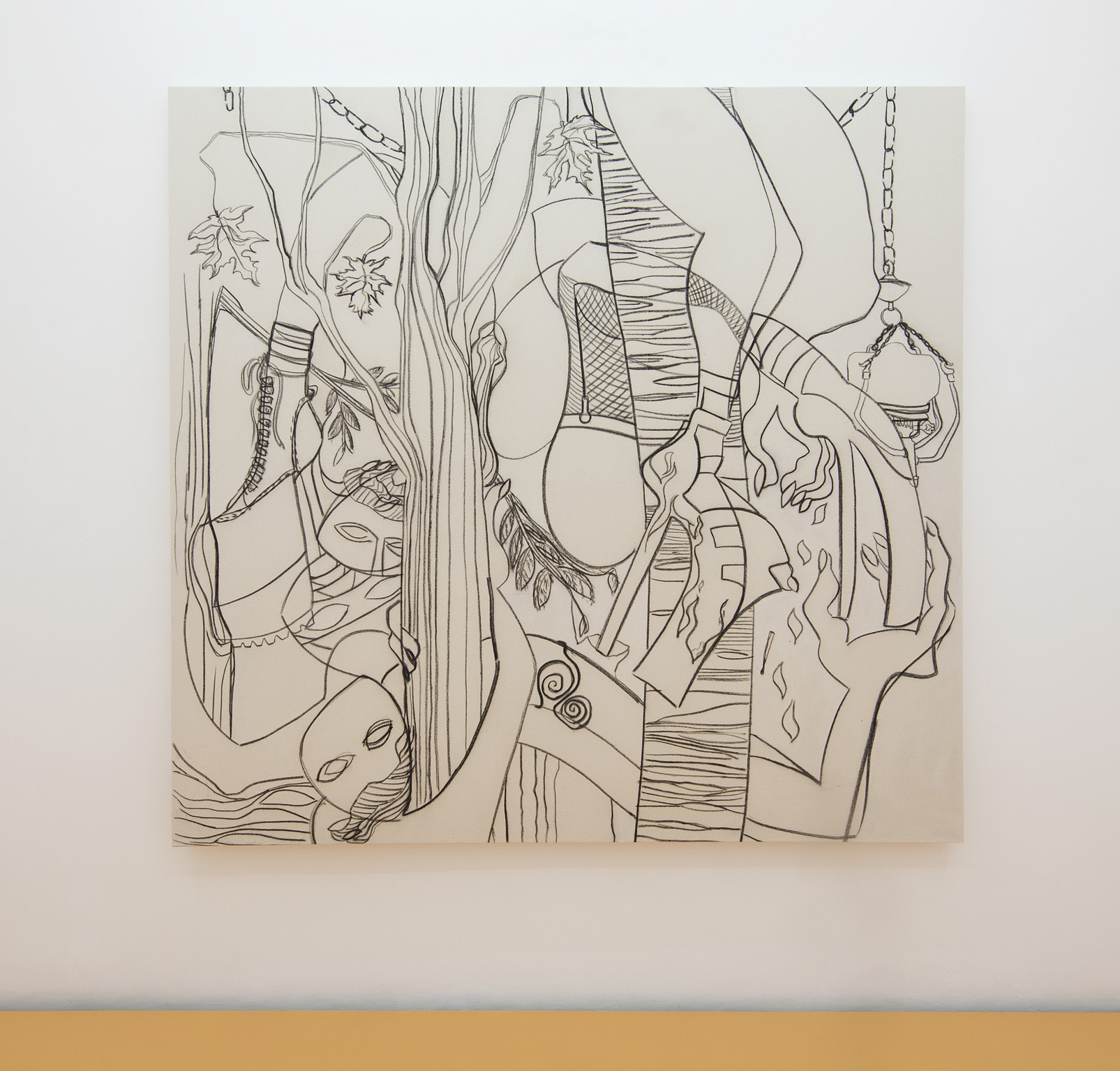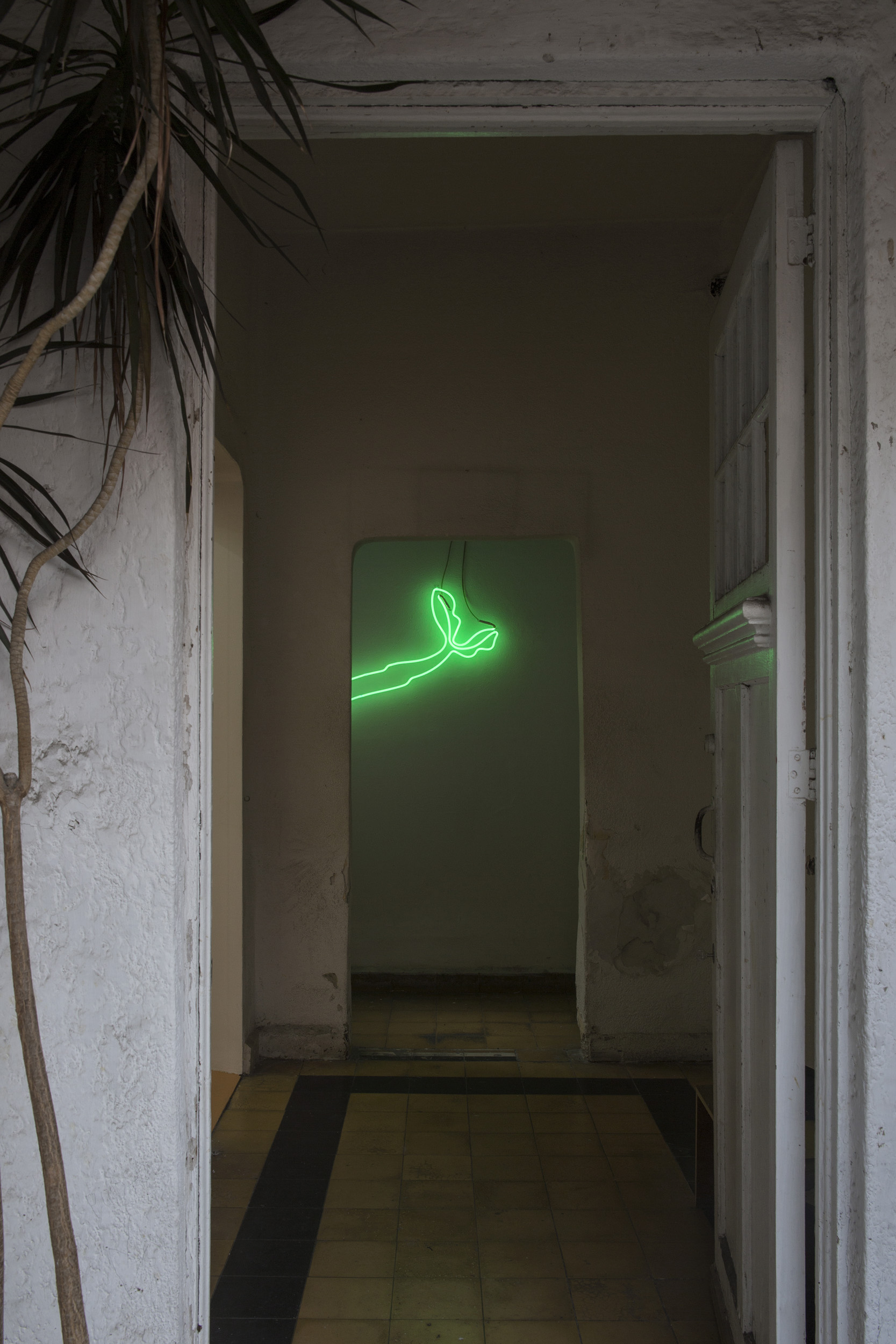
Review
Malas Madres : Consequently, An Enigma | Chelsea Culprit
by Sandra Sánchez
At Lulu
Reading time
5 min
Malas madres (“Bad Mothers”), currently at Lulu, is the most recent exhibition of work by Chelsea Culprit. The title suggests a relation between human and vegetable: there exists a plant referred to by the same name. But the tension between these worlds cannot be reduced to this name; in producing this series, Culprit has looked through her window at forest life, letting it pass through her eye and guide her strokes. The pieces are released from any possible mimesis as the artist has interrupted the process of observation and unleashed her imagination and desire, resulting in an escape from the supposedly given natural world.
In these canvases we see long-nailed hands, plants, masks, objects of study (a lamp, perhaps), as well as high heels with drawn-on flames that evoke nocturnal sex life. Although the formats of the three pieces are square or rectangular, the predominant force is vertical: the elements hang, lie suspended, and fall, without touching any horizon. It would be unfair to the works to keep to a literal description of them, as their elements generate a tension that presents an enigma to the eye, similar to an environment that is perceived and yet eludes any linguistic reduction. If you are nervous around the mystical, instead stop and think of the ineffable, of being captured by its effects.

As Chelsea arrives at the exhibition in a black leather jacket, I think of the high heels and nightclub aesthetic so characteristic of her work. Doing an interview is not indispensable; we are not facing output that needs text and speech to operate as equivalents to the work itself. Once we’ve loitered a little, she takes the initiative to tell me that she started the series inside a cabin. Some of the canvases share the height of that place, which measures only a little more than her own stature. The work was carried out next to a window overlooking a view lined with trees. Chelsea made her own charcoal with that place’s wood, resulting in the inconstancy of the lines’ shape and width. When observing it in detail, we can detect when the charcoal breaks and alters the rhythm of the composition.
As interesting as this use of materials may be, they do not only respond to an environment, but also form part of a specific intentionality:
“These works have no paint, only the energy of movement, things that are there but have no form. It’s special to have this exhibition during this calendar period because we are aware of the spirits that are always in the physical world. We have bodies, they don’t, but they are with us.”
When I ask the artist if there is any kind of transtextuality in the masks, she confirms something I already intuited: they’re ghosts. It matters little whether we are thinking about metaphysical entities or the spectral relationship we have with nature; the works themselves are not interested in making a statement in this regard; their power lies rather in the questions they raise about our bodies’ postures toward the unknown.

There is another constant element in the canvases; it is not only present, but also active: the hand. Chelsea hesitates a little, as though its role were not so clear, and then comments:
“The hand is an extension of our form of expression and communication; it is also what gives and takes, the place where processes happen.”
The “give” and the “take” allow me to see a sadomasochistic tone in the works. It is not a foul violence, but rather a playfulness full of both pleasure and joy.
Chelsea thinks that among the pieces in the series there are some, not currently exhibited, in which the sadomasochistic tone is more explicit. She positions herself away from any cliché, interpreting sadomasochism within a framework that problematizes the relationship between nature and culture, stripping the term of any polar or pathological character:
“Culture (human activities expressing identity such as government, commerce, farming) decreases rapidly when in a barren territory. The space I worked in was like this, rugged and intact; it’s a preserved forest, left alone for 250 years. The question of who is in power is part of sadomasochism, but also part of the total erasure of the human species’s consciousness. We feel different from other animals and from other plants, when in fact we have symbiotic relationships with them.”
Conversing with the artist makes evident the power of enigma that sustains her production. If indeed one first enters the canvases through their beauty (the beauty of the stroke, of the figures, of the unrecognizable, of the contrast between off-white and black), the following moment can be multiplied and can lead to discussions of the problems that the paintings themselves contain. I therefore recommend going to see the exhibition with one’s judgment temporarily suspended. Consider it as if it were a note about a distant but familiar experience: this way it can evoke the mystery of the bad mothers that inhabit us all.

Published on November 8 2019